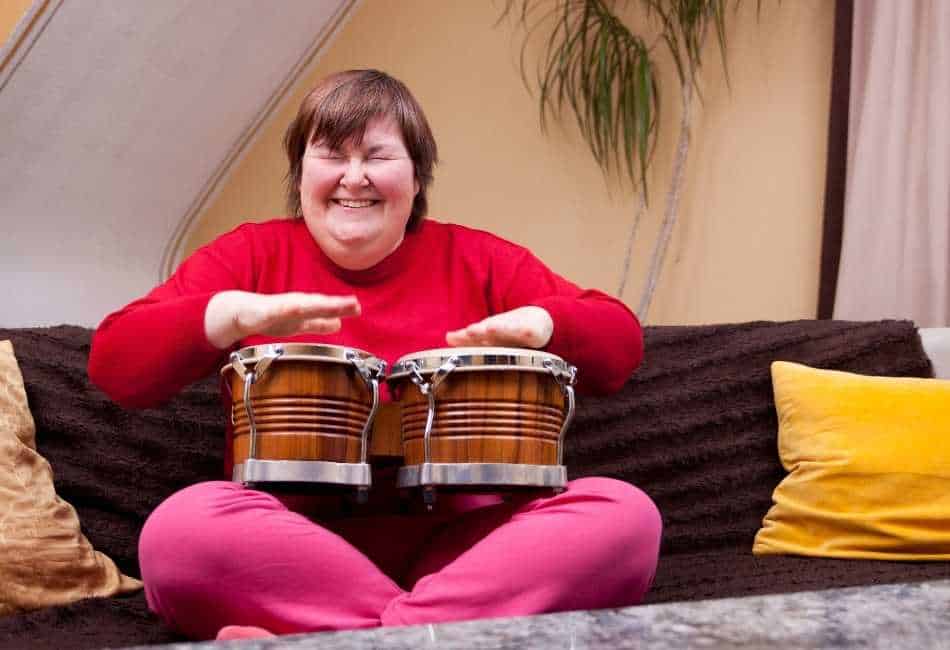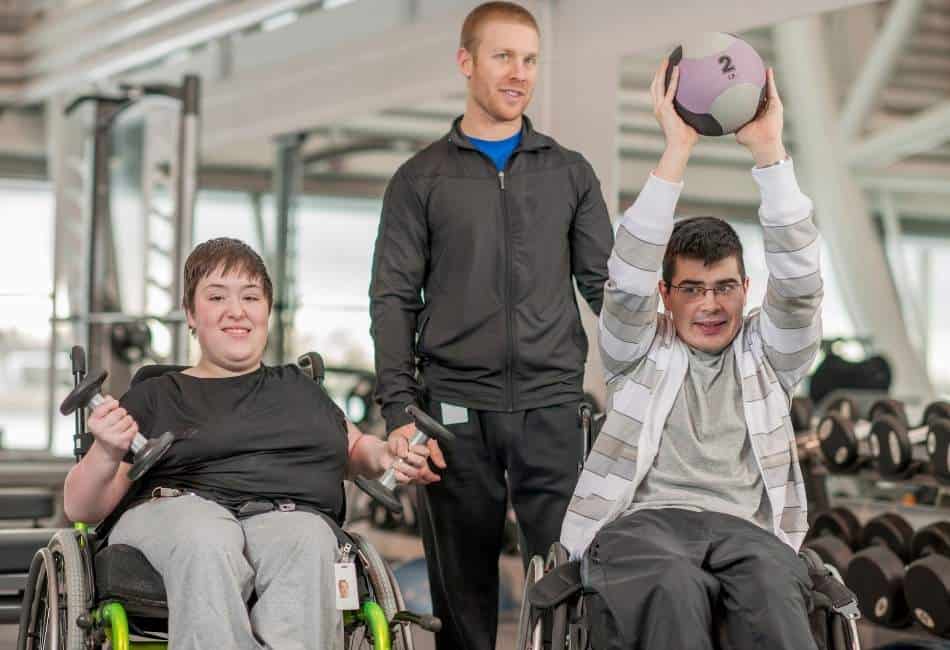
If you decide that you are inadequately equipped to care for your loved one with special needs, there are specialized living arrangements available to assist you.
A group home is a type of assisted living facility that offers 24-hour medical support for residents with disabilities. In these homes, differently-abled people can lead fulfilling lives, engage with their community, and build independence without being alienated or made to feel like a burden.
Choosing to move your loved one into a group home comes with many variables. Fortunately, you can rest assured that admission into a group home ensures a prosperous life for each resident. It is best to learn more about group homes to get more comfortable with this decision, so consult the guide below to understand the basics of these facilities.
What is a Group Home for the Differently-Abled?
Many people who live with disabilities need assistance in performing day-to-day tasks. To access this support, they may be admitted to institutional care facilities to live with round-the-clock care. Examples of such facilities include (Source: Very Well Health):
- Accessory Dwelling Units (ADUs): Nicknamed “in-law apartments,” these residences are often located inside a primary home. The idea is to allow as much independence to the person in need as possible while still housing someone close by to provide the necessary care when needed.
- Assisted Living Facilities: Services available through these facilities differ quite extensively, as well as the living arrangements (residences can be shared homes, individual apartments, or other housing types). Depending on the location, patients may receive dietary assistance, transportation, and other aspects of basic daily living.
- Subsidized housing: Differently-abled subsidized housing residents may be offered additional support, often related to cleaning and shopping. This housing type is primarily available in apartment complexes and is utilized mainly by individuals with limited income. These options are most often associated with state and federal government agencies.
Not all differently-abled people will be admitted to such facilities, whether by choice or due to financial or other reasons. As an alternative, they may instead look to a group home. Group homes offer many of the services one might find in the institutions listed above but are managed and structured differently.
Group homes can be privately-owned, non-profit, or government-run, and are distinguished by the following traits (Source: Very Well Health; Very Well Health; California Mentor):
| Services | Group Homes (also known as Intermediate Care Facilities, or ICFs) | Accessory Dwelling Units | Assisted Living Facilities | Subsidized Housing |
| Housing | ✓ | ✓ | ✓ | ✓ |
| Meal preparation | ✓ | Optional | ✓ | ✓ |
| Enrichment and peer interaction | ✓ | ✓ | ✓ | |
| Medical care | ✓ | ✓ | ✓ | ✓ |
| Cleaning assistance | ✓ | Optional | ✓ | ✓ |
| Shopping assistance | ✓ | Optional | ✓ | ✓ |
| Suitable for adults and children | ✓ | *Not designed for children, but can be used by families. | ✓ *Can be very difficult to find. | *Not intended for children, but can benefit families with differently-abled kids. |
The checkmarks above indicate what services are definitively available to patients at each facility. Of course, services may vary between locations, even if they do fall under the same category. Research the group home or other assisted living location you are interested in to learn more about the specific support they can offer you or your loved one.
Group Homes Provide Independence
As you can see, group homes, ADUs, and other types of supportive residential services are all quite similar and share plenty of overlap in their intended purposes. However, certain characteristics set group homes apart from the rest. One of the most significant points of appeal for group homes is that they offer differently-abled individuals the most “normal” life possible.
Instead of feeling like a “patient” in a care facility, someone with disabilities can lead a typical life in a comfortable home without feeling as if they are continuously monitored or waited on each day. Not only does this encourage and nurture independence, but it allows for the development of community and familial relationships between peers sharing the residence.
A great example of an organization that offers such care is Bello Machre (a phrase meaning “home of my heart” in Gaelic). This non-profit foundation works with an annual stipend of $13 million to sustain 54 homes where they care for differently-abled individuals living with a vast array of physical and mental conditions.
Within these homes, differently-abled people have access to cutting-edge medical equipment and support without feeling like they’re living in a hospital. At one Bello Machre home, patients are supplied with lift equipment to accommodate physical disabilities and interact with full-time staff and volunteers to meet their psychological and emotional needs. (Source: VOA News)

Group Homes for Kids with Special Needs
Another unique aspect of group homes, compared to other forms of assisted living, is that they are suitable for both children and adults. Children living with severe disabilities may need intensive care that their families cannot provide, ultimately necessitating relocation into a care facility that can offer full-time medical, behavioral, and psychological support.
Many people associate children’s group homes with fostering. Although foster children often reside in these assisted-living programs, these services are available to all kids who need it. One of the best examples of a children’s group home is Wayfinder, a facility found in Los Angeles, CA.
At Wayfinder, kids live in houses with up to six residents. They can enroll in special education programs, engage in physical activities like swimming and other sports, and so much more. They also have access to 24/7 medical support with only a 1:2 staff-to-resident ratio to ensure they receive the most thorough care possible.
Best of all, these kids do not have to stay at the group home at all times. If ever you wish to visit your child at the facility or have them home with relatives now and then, Wayfinder and other children’s group homes allow home visits. Children who require extra special care and attention can benefit from group home services while still retaining vibrant relationships with their loved ones. (Source: Wayfinder Family Services)
What Are the Benefits of Living in a Group Home?
At Bello Machre and similar establishments, residents are encouraged and empowered to live their lives independently and as fully as possible. This can mean anything from simple game nights with housemates to volunteering in their community. The goal is to help residents feel welcome and valued and provide them with the tools needed to work with their disabilities.
Some of the most notable benefits that differently-abled people will experience when living in a group home are (Source: Madison House Autism Foundation; RISE):
- Residents have somewhere to call “home.” Their lives will have structure, and most of all, a sense of normalcy. All residents have responsibilities in the home and are accountable for following rules, which helps them feel actively involved in their residence and care.
- Differently-abled people who live in group homes have access to thriving communities. This community is cultivated in the connections they form with other residents in the home, caregivers, and the local community.
- Note: There are few types of assisted living arrangements that can meet the social needs of differently-abled individuals as well as group homes can. Although it is not a guarantee that you or your loved one will feel alienated or alone in such an environment, group homes offer assurance that residents will have the opportunity to establish relationships with peers.
- Residents receive round-the-clock care. This is a hallmark of nearly all assisted living arrangements and often why differently-abled people are admitted into such facilities. It is often quite difficult for loved ones to keep up with the medical needs of someone with a disability, so transferring the job to someone with professional training is often the best decision.
These advantages are available to all group home residents, though they may be accessible in varying capacities according to your location and selected facility. Unfortunately, service disparities are the main drivers behind the negative press that the group home industry receives. As you research available facilities, it is crucial to know how to identify genuine, instead of rumored, red flags.

What Are the Rules of Living in a Group Home?
Group homes enforce a set of rules to ensure that residents and staff maintain healthy, functional relationships to provide a positive experience for all in the facility. These rules may vary according to the specific residence, staff, and services, so it is best to ask about them before committing to admission.
To give you an idea of what to expect, the Department of Homeland Security (DHS) has provided a publicly accessible example of rules in state-operated group homes.
A few of these DHS guidelines are listed below (Source: DHS):
- Neither residents nor staff are allowed to use or possess drugs and alcohol.
- Residents are allowed to pick the television shows and movies they watch. Explicit content is prohibited. What constitutes “explicit” is decided by management.
- Staff is allowed to share one meal with residents that must be cooked in the home. Any food that the staff brings from their home must be eaten separately to prevent any chance of conflict over the types of food prepared in the home versus elsewhere.
- Residents must be supervised at all times.
Many of these example rules are directed toward staff. If you wish to get a clearer picture of resident-specific regulations, ask the group home management before moving.
Are Group Homes Bad for People with Disabilities?
In and of themselves, group homes are not bad for differently-abled residents. In fact, they are quite the opposite. People who live with disabilities often have difficulty leading a fruitful, productive life on their own. Group homes are designed to restore their autonomy and provide them with critical tools to live with as little hassle as possible.
Still, just like any healthcare industry, there are exceptions to the standard. Some group homes may not offer the same high-quality service that others do, leading people to believe that undesirable practices are the norm in these facilities. In reality, these handful of disreputable institutions are not representative of the whole and should not be used to determine the industry’s merit.
One of the most challenging parts of combating this misconception is the lack of federal regulation presiding over group home care standards. The industry continues to proliferate, yet legislation lags behind, leaving a gray area that can usher in less-than-ideal care practices.
According to the Caregiver’s Library, the following has contributed to the lack of care standardization (Source: Caregiver’s Library):
- Only two in every five states enforce specific licensing standards and regulations for assisted living facilities.
- Only one in every five states has written and updated official regulations for assisted living services and commercial practice.
- A mere 20% of states have launched official studies into assisted living practices within their jurisdiction.

Finding the Right Group Home
It is natural to feel uncertain of your commitment to transitioning yourself or your loved one into the care of a group home. These feelings may be exacerbated due to widespread misconceptions about these facilities and the lack of standard practice and quality across the country.
To ease your apprehension, it is best to perform in-depth research into your desired facility and ask the staff specific questions to verify the care available to you or your differently-abled loved one. Essential services and features to look out for include:
- Educational opportunities, such as the special education program offered at Wayfinder Family Services
- Continuous staff training to ensure the maintenance of high-quality care for residents’ medical, psychological, and social well-being
- 24-hour and emergency medical support
- Family visitation
You might also want to ensure that the home is in an area with minimal traffic congestion. So, if an emergency arises, your family should be able to reach your loved one as soon as possible. For the same reason, proximity to a hospital is critical as well, in case the in-home medical staff is unable to fulfill individual needs. Asking the following questions will help you verify all these attributes:
- What is the full list of services available at this facility?
- Are there payment plans available?
- May I inspect the available rooms before move-in?
- What is the protocol for addressing medical emergencies?
- What types of training are your staff required to take to work or volunteer here?
- Are there medical professionals on-site at all times?
- Are residents regularly evaluated to monitor their health and progress? Who is responsible for conducting these evaluations?
- What types of activities are available to residents?
- How much social interaction do residents receive?
- Who is responsible for administering residents’ medication?
- Are residents’ families allowed to visit and vice versa? How often?
How Much Does It Cost to Live in a Group Home?
Like any healthcare, the cost of group home living will vary according to location, facility, and offered services. Still, no matter which establishment you choose, it is likely that you or your loved will be paying a relatively high price for this care. Group home living entails full-time, multi-faceted professional support, so although it can be quite expensive, it is inarguably worthwhile.
According to the American Association of Retired Persons (AARP), boarding and care homes’ costs have not been officially calculated. However, a 2019 survey yielded an estimated national average of $50,000 for a full year of assisted living. Some factors can increase this price, such as skilled medical care (in this case, the average was $90,000-100,000) and the room’s size.
Further, the cost of living in a group home can change depending on where the house is located. For example, in California, residents may be expected to pay approximately $54,000 to live in an assisted living facility. The cost of living is the primary factor in determining these costs, as this state is far more expensive to live in than most others. (Source: AARP)
Still, these numbers are not set in stone, as other estimates point to far steeper prices. Officials at Residential Support Services, Inc. report that group homes that offer skilled nursing will likely cost up to $10,000 monthly. Fortunately, Medicaid can help cover the bulk of this cost, but this is not guaranteed. (Source: Residential Support Services, Inc.)

Group Homes Are A Great Choice
A group home is an alternative to assisted living arrangements like accessory dwelling units, assisted living facilities, and subsidized housing. They allow residents to develop and maintain relationships with peers, family, and their community while retaining a sense of independence. Additionally, group homes are available for differently-abled children that need specialized care.
In these facilities, residents typically have access to 24-hour medical support, as well as enrichment activities and general living assistance (e.g., cleaning, meal preparation, etc.). Quality and prices may vary, so it is crucial to ask questions before committing to admission. Prior research is essential in determining whether a home is suitable for you or your loved one with special needs.
